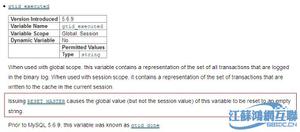双OWIN身份验证不能一起工作
对于我的网站,我正在使用OWIN OpenId与第三方身份验证提供程序进行集成,以允许访问者注册/登录/注销。 “Second”双OWIN身份验证不能一起工作
对于我的应用程序,我还有一个测试环境,在将这些更改推送到生产之前,测试所有代码更改。我将测试环境与另一个第三方身份验证提供程序的公共访问隔开,并使用OWIN OpenId以及“First”。只有经过验证的访问者才能访问测试环境网站。
现在的问题是,这两个工作是独立的,但我似乎无法将它们结合起来。我试图实现的是,我可以通过使用First进行身份验证来访问测试环境,然后作为regluar访问者使用Second进行身份验证,以查看为注册访问者设计的内容。
下面是我在做什么:
两个authnetication提供商与cookie认证工作,但我给了他们一个不同的AuthenticationType把它们分开。
if (IsEnabled("First")) app.SetDefaultSignInAsAuthenticationType("First");
else
app.SetDefaultSignInAsAuthenticationType("Second");
// Configure First.
if (IsEnabled("First")) {
app.UseCookieAuthentication(First.CookieAuthenticationOptions); // AuthenticationType is set to "First" in these options.
app.UseOpenIdConnectAuthentication(new OpenIdConnectAuthenticationOptions
{
ClientId = First.AADClientId,
Authority = First.Authority,
Notifications = new OpenIdConnectAuthenticationNotifications
{
AuthenticationFailed = context => { ... },
RedirectToIdentityProvider = context => { ... }
},
AuthenticationType = "First"
});
app.Map($"{First.Path}/login", config =>
{
config.Run(context =>
{
context.Authentication.Challenge(new AuthenticationProperties
{ RedirectUri = First.ReturnUrl, IsPersistent = true },
"First"
);
context.Response.StatusCode = 401;
return context.Response.WriteAsync(string.Empty);
});
});
}
// Configure Second.
app.UseCookieAuthentication(Second.CookieAuthenticationOptions); // AuthenticationType is set to "Second" in these options.
app.UseOpenIdConnectAuthentication(new OpenIdConnectAuthenticationOptions
{
UseTokenLifetime = false,
Notifications = new OpenIdConnectAuthenticationNotifications
{
AuthenticationFailed = x => ...,
RedirectToIdentityProvider = x =>
{
var mgr = x.Options.ConfigurationManager as PolicyConfigurationManager;
if (x.ProtocolMessage.RequestType == OpenIdConnectRequestType.LogoutRequest)
{
var config = await mgr.GetConfigurationByPolicyAsync(CancellationToken.None,
x.OwinContext.Authentication.AuthenticationResponseRevoke.Properties.Dictionary["PolicyId"]);
x.ProtocolMessage.IssuerAddress = config.EndSessionEndpoint;
}
else
{
var config = await mgr.GetConfigurationByPolicyAsync(CancellationToken.None,
x.OwinContext.Authentication.AuthenticationResponseChallenge.Properties.Dictionary["PolicyId"]);
x.ProtocolMessage.IssuerAddress = config.AuthorizationEndpoint;
}
var redirectUri = Second.ReturnPath;
x.ProtocolMessage.RedirectUri = redirectUri;
x.ProtocolMessage.PostLogoutRedirectUri = redirectUri;
},
SecurityTokenValidated = x => ...
},
Scope = "openid",
ResponseType = "id_token",
ReturnUri = Second.ReturnUri,
ClientId = Second.ClientId,
ConfigurationManager = GetConfigurationManager()
AuthenticationType = configuration.AuthenticationType
});
app.Map(Second.LoginPath, config =>
{
// Trigger unauthorized so that active authentication will redirect to active directory.
config.Run(context =>
{
// Set policy in context to mitigate null ref exception in Startup.Auth OnRedirectToIdentityProvider
context.Authentication.Challenge(
new AuthenticationProperties(new Dictionary<string, string>
{
{"PolicyId", Second.LoginPolicyId}
})
{
IsPersistent = true,
RedirectUri = returnUrl
}, "Second");
context.Response.StatusCode = 401;
// Middleware will redirect us instead of using this output.
return context.Response.WriteAsync(string.Empty);
});
});
app.Map(Second.ReturnPath, config =>
{
config.Use((context, next) =>
{
// In case of login, we will never get here because we will get redirected by middleware.
context.Response.Redirect("/");
return Task.FromResult(0);
});
});
当第一次启用,这允许我做
var identity = HttpContext.Current.GetOwinContext.Authentication.AuthenticateAsync("Second").Result?.Identity; 在后续请求中,有一个ClaimsIdentity。但是,当First启用时,出于某种原因,上述结果为空。
我注意到,当我启用第一和第二,并将DefaultSignInAsAuthenticationType设置为“第二”,它是第一个不再工作。如果我同时启用First和Second,并使用First的先前身份验证Cookie浏览网站,则一切正常。
我猜测返回方法,某处设置身份验证cookie需要一些AuthenticationType的引用,但我不知道该在哪里做。
我缺少什么?
回答:
诀窍是第二配置时AuthenticationType添加到TokenValidationParameters,像这样:
app.UseOpenIdConnectAuthentication(new OpenIdConnectAuthenticationOptions {
UseTokenLifetime = false,
Notifications = new OpenIdConnectAuthenticationNotifications
{
AuthenticationFailed = x => ...,
RedirectToIdentityProvider = x =>
{
var mgr = x.Options.ConfigurationManager as PolicyConfigurationManager;
if (x.ProtocolMessage.RequestType == OpenIdConnectRequestType.LogoutRequest)
{
var config = await mgr.GetConfigurationByPolicyAsync(CancellationToken.None,
x.OwinContext.Authentication.AuthenticationResponseRevoke.Properties.Dictionary["PolicyId"]);
x.ProtocolMessage.IssuerAddress = config.EndSessionEndpoint;
}
else
{
var config = await mgr.GetConfigurationByPolicyAsync(CancellationToken.None,
x.OwinContext.Authentication.AuthenticationResponseChallenge.Properties.Dictionary["PolicyId"]);
x.ProtocolMessage.IssuerAddress = config.AuthorizationEndpoint;
}
var redirectUri = Second.ReturnPath;
x.ProtocolMessage.RedirectUri = redirectUri;
x.ProtocolMessage.PostLogoutRedirectUri = redirectUri;
},
SecurityTokenValidated = x => ...
},
Scope = "openid",
ResponseType = "id_token",
ReturnUri = Second.ReturnUri,
ClientId = Second.ClientId,
ConfigurationManager = GetConfigurationManager(),
AuthenticationType = configuration.AuthenticationType,
// ADD THIS TO MAKE IT WORK:
TokenValidationParameters = new TokenValidationParameters
{
AuthenticationType = configuration.AuthenticationType
}
});
以上是 双OWIN身份验证不能一起工作 的全部内容, 来源链接: utcz.com/qa/267098.html






